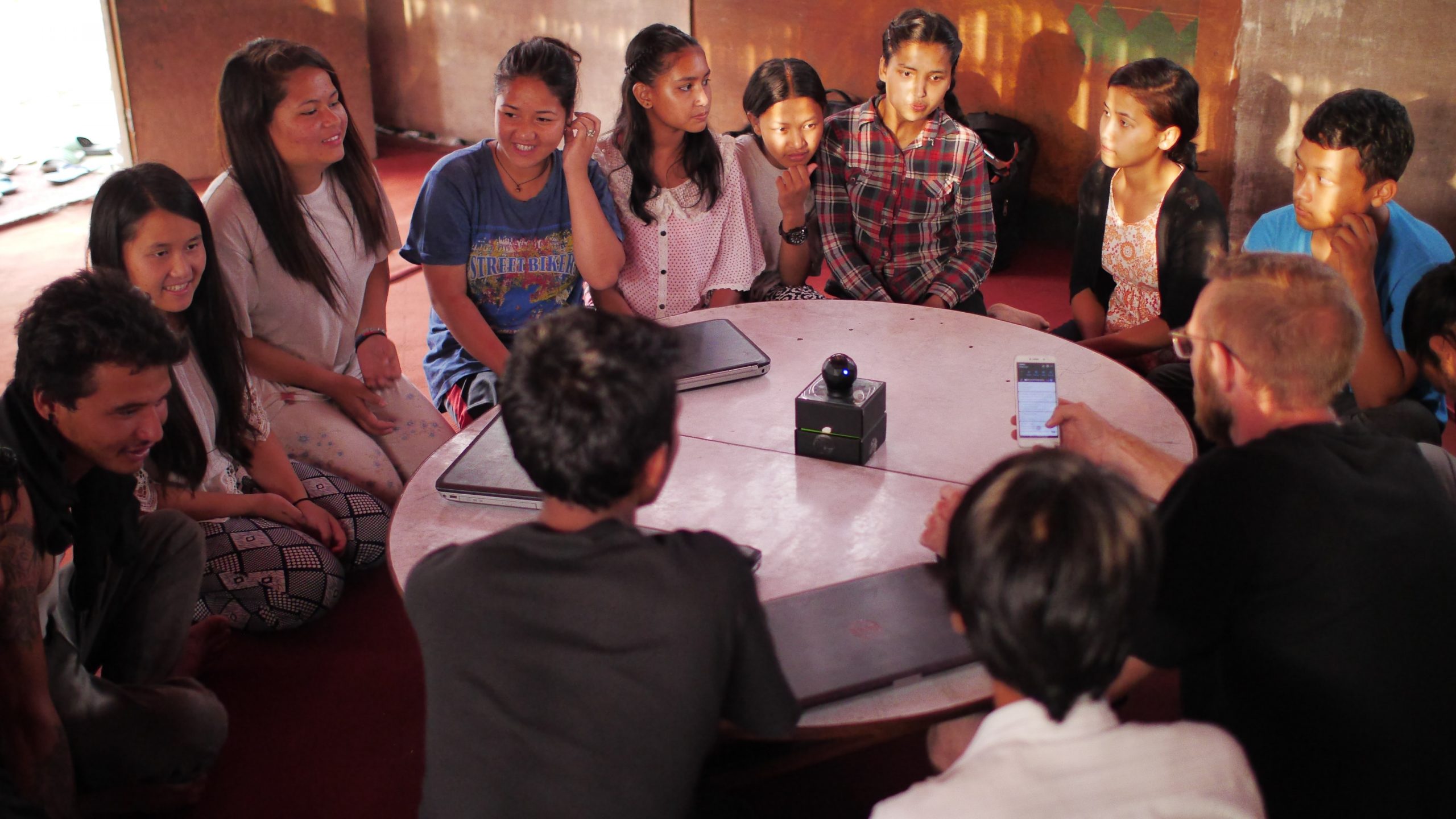
[Online Exclusive] Generation(s) Next: Lessons from the ATM
October 18, 2017
10 Questions for Louisa Jewell
October 18, 2017By Erin Robinson
Project Comeback and how to rejuvenate rural communities
Rural communities across Canada struggle, for a variety of reasons, to retain and attract youth. The twin demographic trends of youth out-migration and an aging baby boomer population make it increasingly important for rural towns to implement retention and attraction strategies.
Through Project Comeback, a two-year research-based initiative led by the Fraser Basin Council’s and the BC Rural Network, we discovered that when a community decides to develop strategies to attract and retain youth, it is critical they assess several factors. Among these factors, we can mention: amenities, employment, and access to education. It is also important to take non-traditional factors that may not have been considered in previous generations into account, such as: ability to realize work/life balance, availability of arts, culture, networking and recreation opportunities, and cultivating a sense of belonging to place.
Background
How can rural communities market themselves as the places in which young adults can have the quality of life they desire? How can retention and attraction initiatives use the values and inclinations of youth themselves to create more effective strategies? Questions like this are informed by our project which helped five communities in rural British Columbia understand youth retention and attraction and helped to create community-specific marketing to address the issues identified. Although the study focused on youth ranging from ages 15 to 39, for the purpose of this article, the lessons relating to the 28 to 35 age range will be explored.
Our research findings did not support absolute retention where youth are encouraged to stay-put in their hometown, but rather supported advocating for life experiences outside of the community (i.e., travel, education and employment) and then having a narrative in place that encourages youth to consider bringing experiences back when they are ready to settle down. Further, our research demonstrated that values which would have attracted the previous generations to rural communities, mainly stable employment, took a backseat to less traditional values such as: work/life balance, finding true meaning in work, digital information on the availability of arts, culture and recreation opportunities, networking, and sense of belonging to a place.
Methodology
The communities in the study were: Smithers, Williams Lake, Chase, Kaslo and the Regional District of Mt Waddington. Initial research on youth retention helped each community create a location specific survey. The surveys were used to capture baseline data to assess the push and pull factors that youth face when deciding to stay, return or leave a place. Questions on the surveys also asked participants to reflect on what they might look for in an “ideal community,” to see where any gaps or overlaps existed.
In each location, the survey results were presented back to the community via a workshop. The workshops allowed community members time to consider the results, and to create a marketing initiative based on the specific youth-retention issue or opportunity identified.
Results and findings of Project Comeback
Work/life balance – employment and quality of life: As the literature indicates, quality of life is increasingly important for younger generations and this conclusion is supported by our research. One example is from the community of Kaslo, where 49% of survey participants identified “lifestyle” as their reason for choosing Kaslo as their home, while only 12% rated “jobs” as a reason that they settled in the town.
Some project participants in the other four communities involved in the study, expressed wanting to stay in their rural towns but not being able to unless they worked in the resource extraction industries, which were undesirable to them. Rural resource-dependent towns need to diversify their economies and work to connect young people with the skills they might need to take over existing businesses through succession planning or create their own livelihoods through self-employment and entrepreneurship.
Breaking from the traditional worker-employer relationship by fostering employment opportunities where telecommuting, self-employment and participation in emerging fields of employment, offer rural communities more options when attracting prospective residents. The importance of highlighting the potential for non-traditional livelihoods and emphasizing quality of life/employment balance may expand the options for young adults thinking about making rural communities their long-term homes.
Networking, engaging, belonging: The survey results, and the resulting initiatives that followed in all five communities, highlighted the importance of connecting young professionals to opportunities. Although connecting to vocational and political opportunities were identified as important, the most prevalent factor for the young professional demographic was being connected to arts, culture, recreation and one another.
Social networking and programs, where community members can connect with each other, were identified as a critical component to retain a young professional population. It was identified in a cross section of surveys that people live in, or come back to, communities if there is an abundance of events, activities and recreational opportunities. As indicated in the surveys, young adults primarily use the Internet to find out about events and opportunities, therefore, rural communities need to ensure they have a central digital space for this information.
Our research results support the literature by pointing to a sense of belonging and youth perceptions’ of their home community, as playing a major role in their decision to either stay or return . Youth are more inclined to be disengaged and not form an attachment to “place” when perceptions of “nothing to do” or “not belonging” are part of the narrative.
The importance of “place” is critical when designing retention and attraction strategies for youth . Through Project Comeback, the community of Smithers created a publication called “Kids Came Back” that features successful community members that were raised in Smithers, left for education and other opportunities, and have returned to contribute their experiences back into the community. The publication has been very well received and is used in re-location packages, for employers looking to recruit people from out of the area, and it also illustrates to the young people still living there what their hometown has to offer.
Summary and future directions
Project Comeback provided five communities with an understanding of what matters to local young adults and how to ensure the factors identified became priorities moving forward. A common theme was the far-reaching community interest generated by this topic; everyone is interested in the good and bad in their hometown and everyone has an idea for what could make it a better place to live. Engaging young people to advocate for their generation in rural places creates a space for youth to be recognized and appreciated in their community, and provides them with a place they may look to stay in, or return to, as they themselves age.
While employment is a critical factor for the relocation of young adults, it is not enough to retain the Generation Next demographic for the long term. In a time when urban centers are increasingly inaccessible due to their high cost of living, it seems an ideal time for rural communities to actively sell their marketability.
Discovering the intersections of what young adults identify as important to them and what a place has to offer, can provide a community with a positive image of itself to be shared both locally and among those who might consider relocation. In today’s reality of the rapidly changing employment landscape (entrepreneurship, telecommuting, etc.) coupled with the aptitude of this generation as a technologically savvy cohort concerned with work/life balance, rural communities can position themselves to match the needs of these young professionals to create dynamic, thriving places in which to work and live.
Erin Robinson is the Regional Manager for Fraser Basin Council’s Cariboo-Chilcotin Region with offices in Williams Lake and Quesnel, BC. Robinson obtained her Interdisciplinary MA from the University of Northern British Columbia. Her education focused on the cross-cultural collaboration between First Nations and non-First Nations in the context of local land management.
References
Andresen, Will, 2009. “Attracting and Retaining Young People as an Economic Development Strategy.” Illinois Institute for Rural Affairs: Rural Research Report 20(5): 1-8.
Cantrell, Randy with Cheryl Burkhart-Kriesel, Bruce Johnson, Charlotte Narjes and Rebecca Vogt (2008). Moving to the Rural Great Plains: Point of Origin Differences in the Decision-Making Process. Great Plains Research 18 (Fall): 155-63.
Donaldson, Gordon A. (1986). Do You Need to Leave Home to Grow Up? The Rural Adolescent’s Dilemma. Research in Rural Education 3 (3): 121-125.
Dutch, George (2017). “From “Me” to “We”: A necessary shift in career service orientation?” Careering. Spring Summer 2017: 27-28.
Lubik, Sarah (2017). “Entrepreneurship will become a must-have career skill for navigating technological change and an uncertain future.” Careering. Spring Summer 2017: 13-15
Bruce, David with Gwen Lister and Katrina Ellis (2005). “Rural Repopulation in Atlantic Canada: Discussion Paper.” Ottawa, ON: Canadian Rural Partnership (Rural Research Project Inventory). Pp. 1-57
Fraser Basin Council’s and the BC Rural Network. Project Comeback Final Report, 2014: http://www.bcruralnetwork.ca/resources/project-comeback-final-report/

